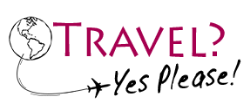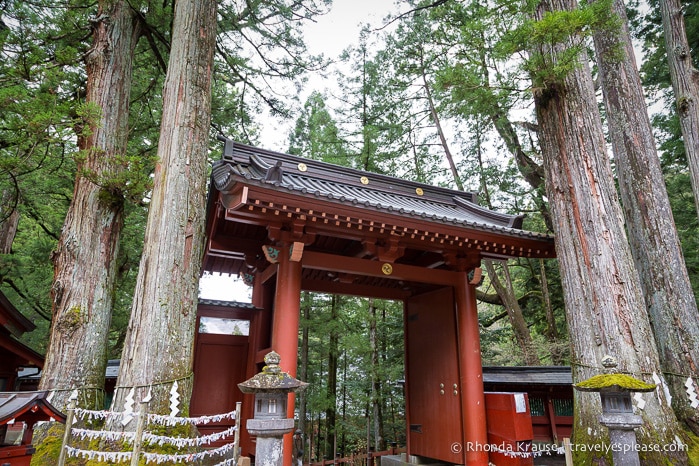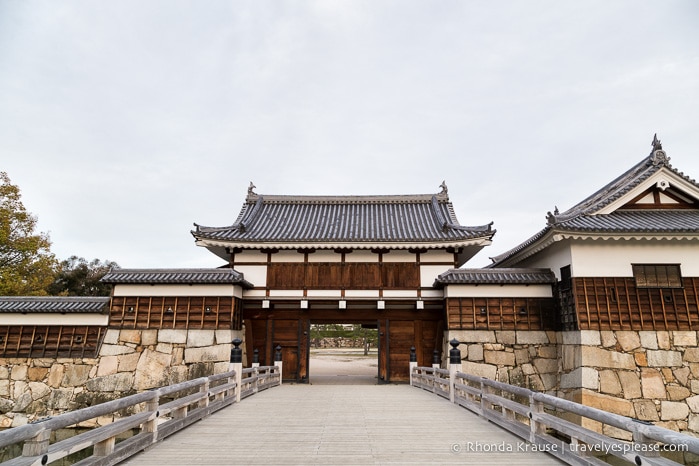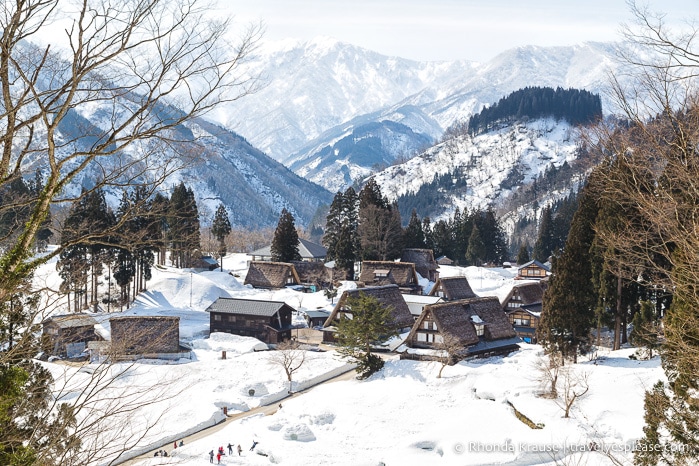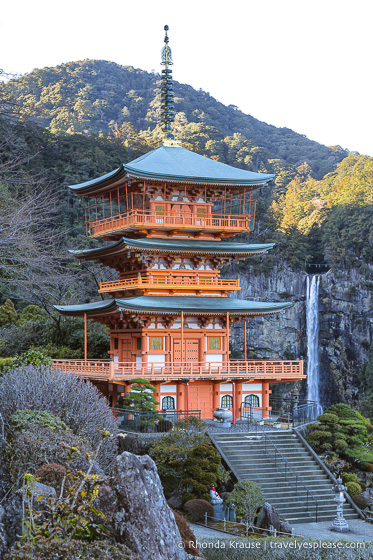What to Expect on Your First Trip to Japan- A First Time Visitor’s Guide
Purchases made through links earn us a small commission, at no extra cost to you.
It’s hard not to love Japan. Beautiful and evocative, Japan awakens your imagination and captures your heart.

Japan is a nation that’s not afraid of innovation and progress, yet is passionately protective and proud of its culture. Temples, shrines, peaceful gardens and traditional customs, co-exist with towering skyscrapers, futuristic architecture, speeding bullet trains and a quirky pop culture.

Japan is contradictory, yet harmonious. Overwhelming, yet calming. Japan is a country of contrasts.
On our first trip to Japan, we instantly fell in love. Japan quickly climbed the ranks as one of our favourite countries. I hold close many fond memories of travelling in Japan and hope that one day I will return to experience more of Japan’s beautiful places and culture.
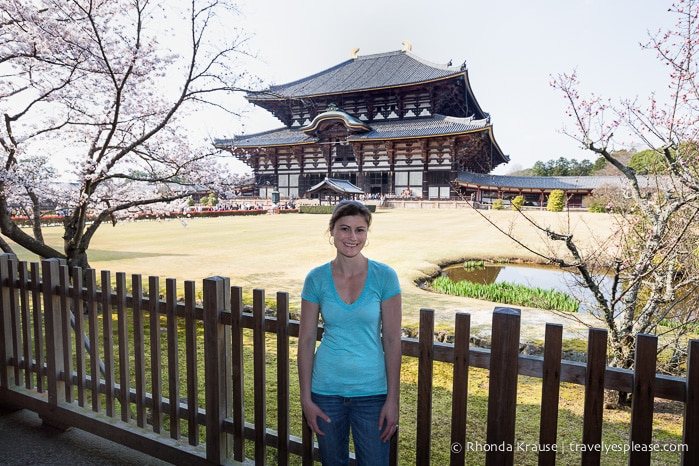
What to Expect on Your First Trip to Japan
When I was planning our trip to Japan, I was stressed. I found everything to be a little confusing, especially the train system. I tried to get as much information as possible so that we would have a smooth first trip to Japan.
As agonizing as it was, my hours of research paid off. We arrived in Japan confident and capable, aware of what cultural differences to expect. Of course, there were things we learned along the way, but it really calmed our nerves to have a base understanding of what to expect for our first trip to Japan.
To help ease any fears you might have about travelling to Japan for the first time, here are some tips and observations from our first trip to Japan.

Language
- It goes without saying that Japanese is the predominant language in Japan. English is taught in schools, so some people we met were interested in conversing with us to practice their skills. Still, many Japanese people are not comfortable with everyday, spoken English.
- We found that English was not spoken in smaller towns that don’t receive a lot of Western tourists. Some locals would use a translation feature on their cell phones to communicate with us. They would type their message and then translate the text into English.
- In large tourist centres, like Tokyo and Kyoto, English was more common. Hotel staff, and some restaurant staff, spoke pretty good English. Other times, English words were pronounced as if they were Japanese, making it hard for us to understand.
- Most important signs (in train stations, subway stations, major road signs etc.) were in both English and Japanese. My biggest worry was not being able to read the destination signs at train stations, but luckily this was never an issue and we always knew where to get off!
- Even with the language barrier, the Japanese people were always very polite and willing to try and help us out when needed.
Survival Tips
- Try and master a few basic phrases and polite greetings. An attempt at even the most basic Japanese will be appreciated.
- My Tourist’s Language Handbook (from the Japan National Tourism Organization Canadian Office) came in handy a few times. I could find the English phrase in my book and point to the Japanese translation underneath. The Google Translate app is also an invaluable tool.
- It really helped to have our hotel names and addresses written in Japanese. All our hotel booking confirmations from Booking.com had Japanese translations, so I would just hand the paper to the cab drivers and they would know where to go.
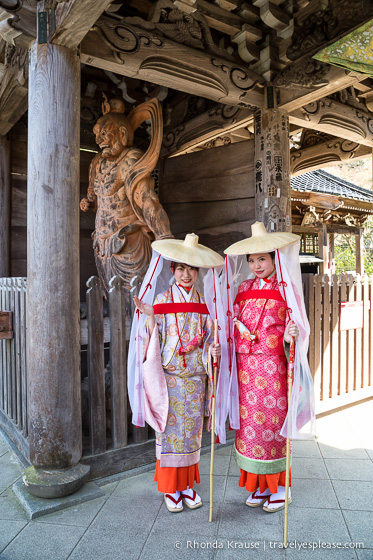
Transportation in Japan
Travelling By Train in Japan
- Japan has a very comprehensive, reliable and efficient rail network. Japan Railways Group (JR) is the main operator but there are also many private railroads linking smaller communities.
- There are many categories of trains, differentiated by how many stations they stop at along the way.
- Tickets can be purchased from machines in the station but we found it easier to buy from the ticket counter.
- A Japan Rail Pass is a good option if you will be doing a lot of travelling around the country. You can choose from a 7 day, 14 day, or 21 day pass. It seems expensive to buy at first but can work out to be a good deal, depending on the specific train trips you make. You must buy a JR exchange order from an authorized Rail Pass agent before coming to Japan, and must be visiting on a Tourist Visa (Temporary Visitor entry status). Use this page to help you find a sales office or more conveniently, purchase your JR exchange order online and have it shipped to you. When you get to Japan, you exchange the voucher for the actual JR Rail Pass. Read our Guide to Buying and Using the Japan Rail Pass for more information.
Using the Subway in Tokyo
- The only city we used the subway in was Tokyo. It’s a massive network with numerous lines, but the signage and colour-coded maps made it very easy to use.
- Tokyo’s subway is operated by two different companies. Nine lines belong to Tokyo Metro, and four are operated by Toei. It’s important to note which group you will be using, as they require separate tickets.
- The ticket machines in Tokyo had an English option, making it easy to purchase tickets. You can buy single fare tickets or choose from a few day pass options. The machines accept coins and bills and fares are determined by how far you ride.
- Tokyo’s subway can be very busy and crowded, so be prepared to have to stand shoulder-to-shoulder with other commuters (especially between 8:00 am-9:30 am and 5:00 pm–8:00 pm).
- People are very quiet on subways and trains, even during rush hour when trains are packed to capacity. Refrain from talking loudly and using your cell phone.
- The Japanese make orderly line-ups when waiting for the subway (it’s marked on the platform where the doors will be when the train stops). When the train doors open, people will move aside and stand along the train, making it easy for passengers to get off.
- If you plan on staying out late, note that the whole subway system in Tokyo shuts down around midnight until 5:00 am.
Taking Taxis in Japan
- Overall, we found the cost of taxis to be on par with other cities we’ve used them in. Cabs in Tokyo were the most expensive, starting at ¥710 (about $7 Canadian) for the first 2 km of travel. After that, the metre went up about ¥100 every 350 metres. Rates are higher at night and on the weekends. (NOTE: Prices may have changed since our trip).
- Taxi drivers in Japan will generally not try and scam you. They always took an efficient route and were honest with the meter.
- You can hail a cab from taxi stands in front of train stations or flag one down on the road. It’s a little counter-intuitive, but a red light on the roof or dashboard indicates the taxi is vacant, while a green light means it’s occupied.
- In our experience, most cab drivers didn’t speak much English, so it helped to have the address of where we were going written in Japanese. Both my guidebooks had place names printed in both English and Japanese, so it was easy to just show that to the drivers. I also, would sometimes have to show them our destination on my map.
- Don’t try and open the left rear door, as the driver opens them electronically from the inside.
Renting a Car/Driving in Japan
- To rent a car, you will need to show an International Driving Permit.
- Driving in Japan is on the left-hand side, which was really strange for us at first.
- You cannot turn left on a red light.
- The roads were in good condition, but some you had to pay a toll to use.
- Most people in Japan adhere to the traffic rules, but some like to speed and tailgate.
- All the road signs we came across were in English and Japanese.
- Our rental car came with a GPS, but it wasn’t easy to use. You could change the voice to speak in English, but all the menus remained in Japanese. This made it impossible to browse by points of interest.
- Gas stations were full-serve (just like the good-old days!). The gas station attendants would also go out to the road and stop traffic so that we could leave!
Using Buses in Japan
- I’ve seen two different methods for using local buses in Japan. Some you board from the front and a flat rate fare is deposited into a slot. Others you board from the centre, take a numbered ticket, and pay the fare when disembarking at the front.
- How to use buses that board from the middle: As you get on, take a numbered ticket from the machine at the door. Fares are displayed on a screen at the front of the bus, so look at the number on your ticket and your listed stop to determine how much you need to pay. Drop your exact change and ticket into the box beside the driver as you disembark from the front of the bus.
- Payment by coins is best for local buses. All the buses I used had a machine where you could change ¥1,000 notes only.
- For highway buses in Japan (like the coach-style ones to get to Mt. Fuji and the Fuji Five Lakes), you can make reservations and pay in advance. Simply show your ticket to the driver.
- Bus depots are usually located outside train stations in the cities.
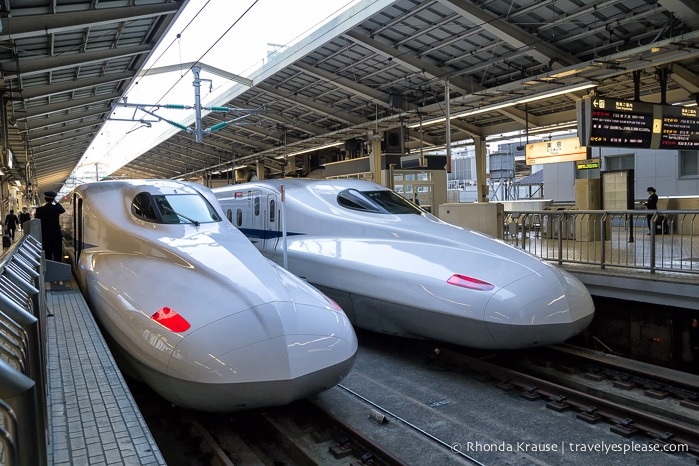
Accommodations in Japan
- There are many different types of accommodations in Japan. If you’re looking for something unique to Japan, try a capsule hotel. For a taste of Japanese culture, temple lodging or a traditional ryokan (our favourite type of accommodation) are the way to go. There are also budget-friendly business hotels, mid-range hotels and deluxe hotels, for those who prefer a little luxury.
- Hotel rooms were Western-style, but very small by North American standards. Plenty of amenities were usually provided including slippers, a robe or pyjamas, soap, shampoo, combs and toothbrushes. All our hotels (except for one) had free Wi-Fi available in the rooms.
- Ryokans are traditional Japanese inns. Guestroom floors are covered in tatami mats (made out of straw and rush) and have a low table surrounded by cushions or leg-less chairs. Sleeping is done on a futon mattress, which will be laid out on the floor for you in the evening. Our rooms also had a small, screened-off veranda with armchairs and a table. Some ryokans have communal bathing facilities, while others have private bathrooms in the guestrooms. (Note: Do not wear shoes or slippers on the tatami mats).
- We found accommodations to cost about the same as in Canada. We were paying between $100-$160 Canadian/night (ryokans and temples cost a bit more). Kyoto had the most expensive hotel rates, by far. We paid about $410 Canadian/night (and this was on the low end of what we were seeing online!) I’m sure being there for peak cherry blossom season had something to do with the high prices.
- Quality and affordable accommodations can easily be found near train stations in the cities.

Luggage Storage in Japan
- Hotels will let you store luggage if you arrive before check-in time.
- Train stations have luggage lockers in various sizes. There are fewer large-sized lockers, and they cost more, so packing light is recommended. Lockers in stations take coins (usually ¥100 coins only), but some can be paid with IC cards like Suica and Pasmo (rechargeable transportation cards).
- Most urban and long distance trains don’t have significant storage areas for large luggage, just an overhead rack for smaller bags. Larger suitcases can be stored behind the last row of seats in each car. For cars that have a designated luggage storage area, it’s usually just a nook big enough for one or two suitcases. The exception is airport trains like the Narita Express and Tokyo Monorail to Haneda. Unless you’re travelling during high season or during a holiday, I wouldn’t worry about finding space to keep your luggage on the train. Worst case scenario, you keep it in front of you at your feet (there’s enough leg room on shinkansen to do this, but it wouldn’t be comfortable). It’s worth noting that on my three trips to Japan, I’ve never had trouble finding storage on the train for my suitcase.
Using Public Baths and Onsen (Hot Springs)
- Japan is very geothermally-active and there are over 2,000 hot spring areas across the country. Communal bathing in these healing waters has been a custom for centuries and is still a popular activity today.
- In most Japanese public baths, bathing is segregated with separate pools for men and women. In smaller establishments, there will be different bathing times for men and women. The segregation is because bathing is done in the nude. It’s considered unclean to have any fabric (such as a swimsuit) touch the water.
- The bathing room consists of three different areas: a room for undressing, a tap/shower area for cleaning yourself, and the pool area.
- Before entering the pool, thoroughly clean yourself at one of the shower stations. There will be low stools to sit on and soap to use. Make sure to completely rinse off any soap before entering the pool.
- You can strategically drape the hand towels across your body as you walk to the pool, but do not let the towel touch the water. Some people would fold up their cloth and put on top of their head while bathing, or just leave it on the edge.
- If you have tattoos you will not be allowed to use onsens, as tattoos are not yet socially accepted in Japan.
- At first I was unsure if I would be comfortable using the public baths, but there was nothing sleazy about it at all.

Public Washrooms & Toilets
- There were plenty of public washrooms available to use and most were kept clean.
- Toilets ranged from Japanese squat toilets, to high-tech Western-style toilets.
- The Western-style toilets had a panel of buttons that you could use to select various features. You could play “flushing” noises for privacy, choose from various bidet options and even adjust the temperature of the toilet seat. The heated seats were my favourite feature!
- Some public washrooms had squat toilets. The best way I can describe them, is to say that they look like a urinal built into the floor. To use them, squat over the trough, facing the “hood”.
- Public washrooms may not have soap or paper towels/blow dryer to dry your hands.
Currency and Banking
- The local currency is the yen. Banknotes come in denominations of 10,000, 5,000, 2,000, and 1,000 notes. Coins come in denominations of 500, 100, 50, 10, 5, and 1. For some reason, the ¥5 didn’t have the numeric value printed on it like the other coins.
- Japan is largely a cash society. We felt weird making small purchases with such big bills, but shops never hand any trouble making change. What we didn’t like though, was having to carry around so many coins!
- Credit cards are accepted at most hotels and restaurants in cities. Some taxis and major train stations accepted them as well.
- Most 7-Eleven convenience stores and post offices had ATMs that accept foreign debit and credit cards. We only had to use an ATM once, but had no issues with it being able to read our card. Check with your bank before you leave to make sure your cards will work overseas.
Admission Prices
- Visiting tourist attractions in Japan was quite inexpensive. Most temples and shrines in Japan were free, except for the more famous ones in popular tourist spots.
- Entrance fees to most attractions were under ¥1,000 ($10 Canadian).
Electricity
- Outlets in Japan take two flat pins, same as North America.
- Electricity in Japan is 100 volts, similar to North America’s 110 volts, so there was no need to use a converter.

Restaurants and Food
- Popular dishes in Japan include rice bowls, noodle soups, hot pots and sushi. Vegetables, tofu and soy products are commonly used as ingredients in Japanese cuisine.
- I’m a picky eater and don’t like seafood or anything that’s remotely “exotic”, so I was worried I was going to starve in Japan. Lucky for me, there were enough western food options available to keep me alive (I ate a lot of Italian food!)
- Many restaurants have realistic-looking plastic “food” displays in their window, so you can easily see what’s on the menu. There are usually also pictures on the menu, eliminating the language barrier when ordering. Some places had English menus available.
- You will be given a warm, damp cloth to wipe your hands with at the beginning of a meal.
- A lot of the meals we ordered were big portions, in big dishes. Looking around, we noticed that many people were sharing their entrees, dishing out onto the provided small, side-plates.
- Some restaurants only had chopsticks but others also had forks and spoons.
- It is perfectly good manners to lift small plates and bowls up to chest level, rather than bend your head down to the food. It’s also okay to sip soup from the bowl and slurp noodles.
- Some restaurants will put a basket beside your table for you to put your belongings in (purses, bags etc.)
- You will likely have to ask your server for the bill when you are done your meal, as they usually don’t bring it automatically.
- The soft ice cream in Japan was some of the best I’ve ever had. It’s so creamy and delicious! It’s readily available and even comes in local flavours like green tea and sakura (cherry blossom).
- There are vending machines everywhere in Japan (the country has the world’s highest number of vending machines per capita!) We saw a lot more that sold drinks than snacks. You could choose from a wide range of drinks including juice, pop, hot coffee, hot and cold tea, and beer.

Tipping
- Tipping in Japan is not expected and some people may even take offense.
Etiquette at Shrines and Temples
- To enter a temple building, you will have to remove your shoes. Sometimes you will be provided with a plastic bag to carry your shoes in, other times you can leave them at the entrance.
- There are no dress codes and the atmosphere is pretty relaxed. Still, show respect when visiting Japanese temples by not being noisy.
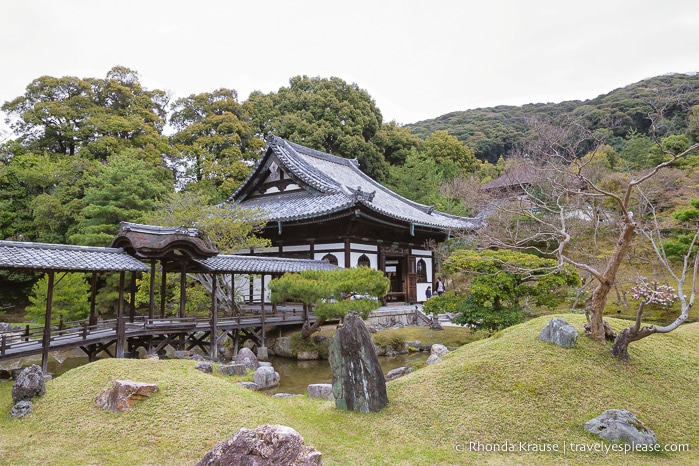
Safety in Japan
- Our impression was that Japanese society is very honourable and the people are very trustworthy. We never worried about walking around with a lot of cash and camera gear, even at night. Still, we took some precautions. In crowded areas, Mike moved his wallet into his front pocket and at night I would put my camera into the bag when walking in less touristy areas.
- Japan may have one of the lowest crime rates in the world, but thefts do occasionally occur, so don’t completely let your guard down.
- There were warnings in Tokyo’s Roppongi district about drinks being spiked with drugs.
- Women getting groped on crowded trains is a problem. The subway in Tokyo had designated cars for women only to help combat this issue.
- Japan experiences a lot of earthquakes, so educate yourself on how to stay safe if one occurs. The Tokyo Government has a bilingual Earthquake Survival Manual and there are emergency response plans for subway stations.
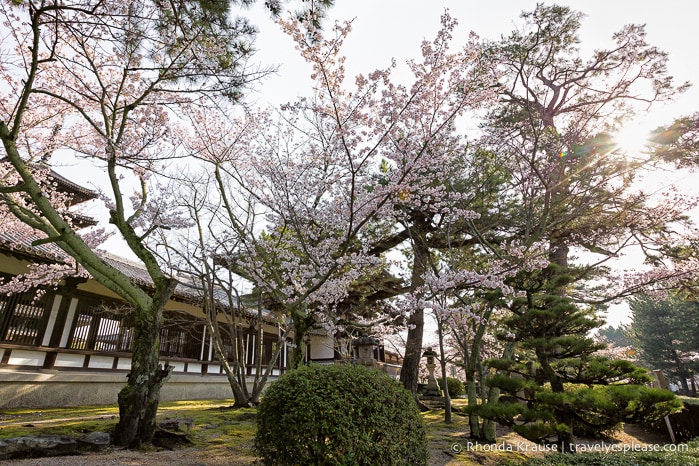
Helpful Apps for Travelling in Japan
- Japan Transit Planner- For train schedules, routes, and fares.
- Japan Travel (by Navitime)- Provides travel tips and short articles about places and things to do in Japan and allows you to plan a personalized itinerary. The offline spot search feature helps locate free Wi-Fi, ATMs, currency exchange stores, and train stations. The transit feature has an interactive railway map and route search so is helpful for planning travel between and within cities using all modes of public transportation. There’s even an option to filter efficient routes for Japan Rail Pass holders.
Other Tips & Observations on Our First Trip to Japan
- When paying for items at a shop, put your money onto the little tray on the counter. Some cashiers would not take money from our hands.
- Japan is meticulously clean, yet garbage cans on the street are practically non-existent. Do not litter- carry your garbage in your day bag until you get to your hotel.
- I noticed that most Japanese don’t eat on the go. I was having a snack while walking down the street and got some surprised looks. This custom probably helps keep the streets clean!
- Another interesting thing Mike noticed was that we were the only ones wearing sunglasses. I think we saw maybe one Japanese person wearing sunglasses during our entire two week trip!
- When in public, a lot of Japanese wear surgical masks covering their nose and mouth. This is very common during hay fever season. People will also wear them if they are sick to prevent the spread of illness.
- Japanese people never stepped in front of me when I was taking a picture. In fact, they would even stop other people from walking in front of me and ruining my photo.
- Even though there are a lot of people in Japan, things were never chaotic. There is always a sense of order, even in big crowds.

Final Thoughts About Our First Trip to Japan
We felt very much at ease travelling in Japan. I’m not sure if that’s because we were prepared, or because the Japanese people are very kind, helpful and welcoming. It was probably a combination of things, but either way, we were impressed with how easy it was to travel around Japan.
I hope this guide helped relieve any uncertainty you might have about visiting Japan for the first time. You may also find our two week itinerary helpful for planning your first trip to Japan.
For more Japan travel information and destination inspiration, visit our Japan Travel Guide.
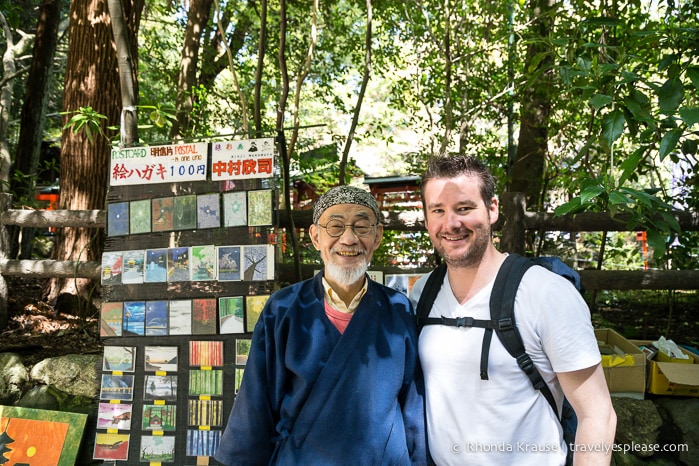
Resources to Help Plan Your First Trip to Japan
The Japan National Tourism Organization has some maps and brochures that you may find helpful for planning your first trip to Japan. You can download and view them here.
Accommodations in Japan
For your convenience, here is a list of hotels in Japan. Please consider booking your Japan accommodations through the included link. It costs you nothing extra and helps support this website. Thank you!
Tours in Japan
Here is a trusted site where you can conveniently book tours and tickets for activities in Japan. There’s a large selection to choose from!
Buy Your Japan Rail Pass
Jrailpass.com is an authorized vendor of the Japan Rail Pass. You can order your pass online and have it shipped to you within 1-3 business days.
Digital SIM Cards (eSIM)
Airalo is an eSIM store/app where you can buy an affordable digital SIM card for your mobile phone. An eSIM lets you access a local data plan for your destination, so you don’t incur expensive roaming fees or always have to look for free Wi-Fi. I like how I can choose an eSIM by country or region and have it installed before leaving home (when my flight lands all I have to do is turn on the local line).
More Japan Travel Guides
- How to Spend 3 Days in Tottori- My Itinerary
- 9 Ways to Experience Japanese Traditions in the Chubu Region of Japan
- Koyasan- Guide to Visiting the Sacred Sites of Mt. Koya
- Itsukushima Shrine- Miyajima Island’s “Floating” Shrine
